
With all the jargon and acronyms going around it is becoming more and more difficult to choose the right CCTV equipment for a specific application.
These days, it seems that terminology is used to create an impressive image for CCTV sales reps and to show that they are knowledgeable. But do they really know what they are talking about? The easiest way to find out is to ask, for example:
What does it mean? How does it work? Why is it so important for my application?
Always seek advice from someone other than a sales representative to confirm the explanation and motivation given to you.
Customers must be informed that not everything a CCTV sales representative says should be believed. The sales representative only sells what his company offers, resulting in the customer not necessarily buying the correct equipment. This is a huge disadvantage to any customer.
In order to assist you, the customer, here are a few of the latest jargon and acronyms in the CCTV market.
Minimum scene illumination
Camera sensitivity is measured in units of Lux and is reflected as either Scene or Image illumination. Scene illumination is X10 image illumination and some manufacturers like to play around not specifying which one is applicable to their requirement. As a rule the image illumination will apply if not specified.
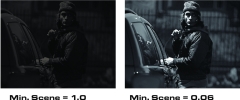
Cameras with lower minimum illumination allow users to recognise objects better than cameras with higher minimum illumination do.
Application advantage - better quality images under low light conditions.
Noise reduction (NR or SSNR)
Noise reduction reduces or eliminates the noise (graininess) in video images to produce a clear image under low light conditions. This feature has become very important with digital video recorders (DVRs) where the compression technology and video motion detection features depend on changes within the images. The fewer the changes, the smaller the compressed image file, as well as fewer false alarms.
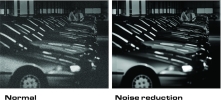
Day/night
Black and white cameras perform better under low light conditions than colour cameras. Camera with day/night function will automatically switch over from a colour mode to a black and white mode as soon there is not enough light for a reasonably good colour picture. Two different technologies are used these days, one where the camera just switches over from colour to black and white. The second where, in addition to switching over, the infrared cut filter is removed mechanically resulting in better camera sensitivity under lowlight conditions. (The IR cut filter is used to improve colour reproduction in colour cameras.)
Application advantage - outdoor cameras that need to be effective for 24 hours a day.
Back light compensation (BLC)
Conventional cameras could be setup to reflect information in well-lit areas where either an image reflects dark areas in the picture (silhouette type images) or the image reflects information in the darker parts of the picture resulting from overexposed areas. BLC allows the camera to automatically enhance the darker areas in the image. As soon as a dark spot appears in a predefined area within the image this results in a well-lit area becoming over exposed until the spot disappears.

Application advantages - indoor cameras focusing on entrance-ways leading from outside; indoor cameras focusing on areas with big windows.
Wide dynamic range (WDR)
Conventional and BLC cameras process illumination difference between indoors and outdoors poorly. WDR technology makes monitoring possible inside and outside a building, where excessive illumination difference is present between the inside and the outside of a building. These types of cameras employ dual shutter control and image processing to provide a picture with detail both inside and outside a building.
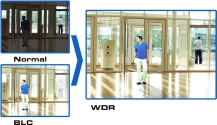
WDR is a step forward from BLC.
Application advantages - indoor cameras focusing on entrance-ways leading from outside; indoor cameras focusing on areas with big windows; outdoor cameras with large shaded areas.
Colour transient improvement (CTI)
CTI smoothes out the edges of colour images so that they appear more distinct and enables colours to be reproduced more precisely.
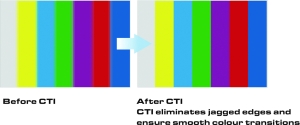
3D Comb filter
3D Comb filter separates the Y (black and white) and C (colour) elements of a video signal and thus reducing effects such as dot crawling. Dot crawling is the effect seen on your TV when the presenter has a tie on with very fine lines of difference. It also compares the consecutive horizontal scan lines within a single video frame, and analyses each frame in advance ensuring best possible picture.

Motion detection
Video motion detection is done by comparing two consecutive video images (or sections thereof) with each other for changes. If a change exists an event is registered which could either set off an alarm or start recording the associated camera images. This technology is used in DVRs to limit recording of video images to only required information. In doing so the required storage space is reduced. The detection sensitivity can be adjusted from low to high. High indicates high sensitivity resulting in more prompt reaction to movement.
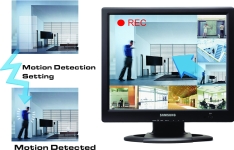
| Tel: | +27 11 401 6700 |
| Email: | [email protected] |
| www: | www.elvey.co.za |
| Articles: | More information and articles about Elvey Security Technologies |

© Technews Publishing (Pty) Ltd. | All Rights Reserved.